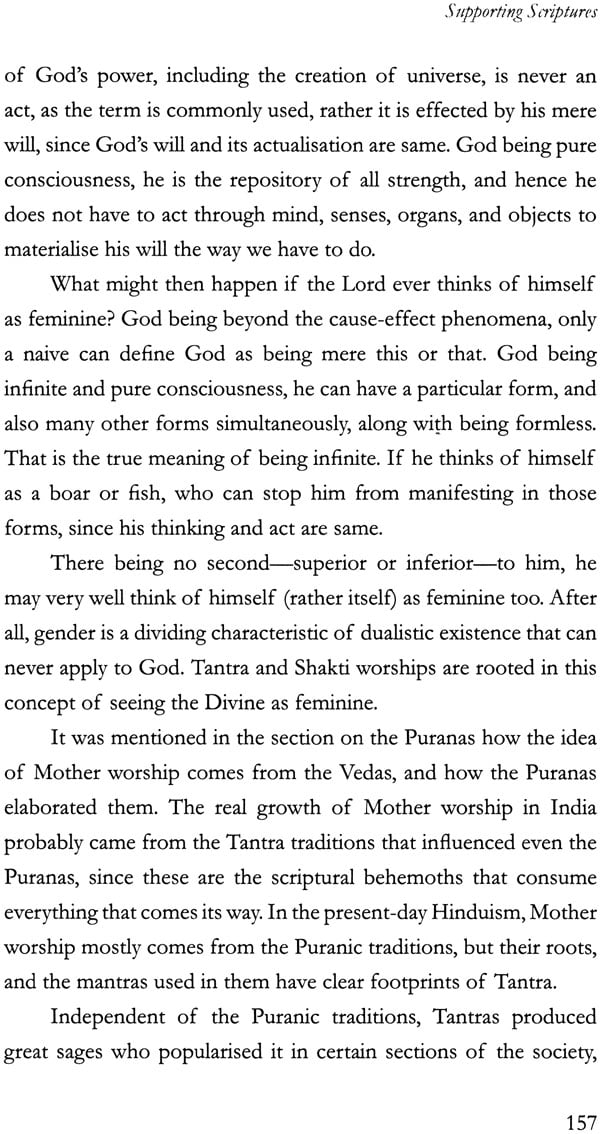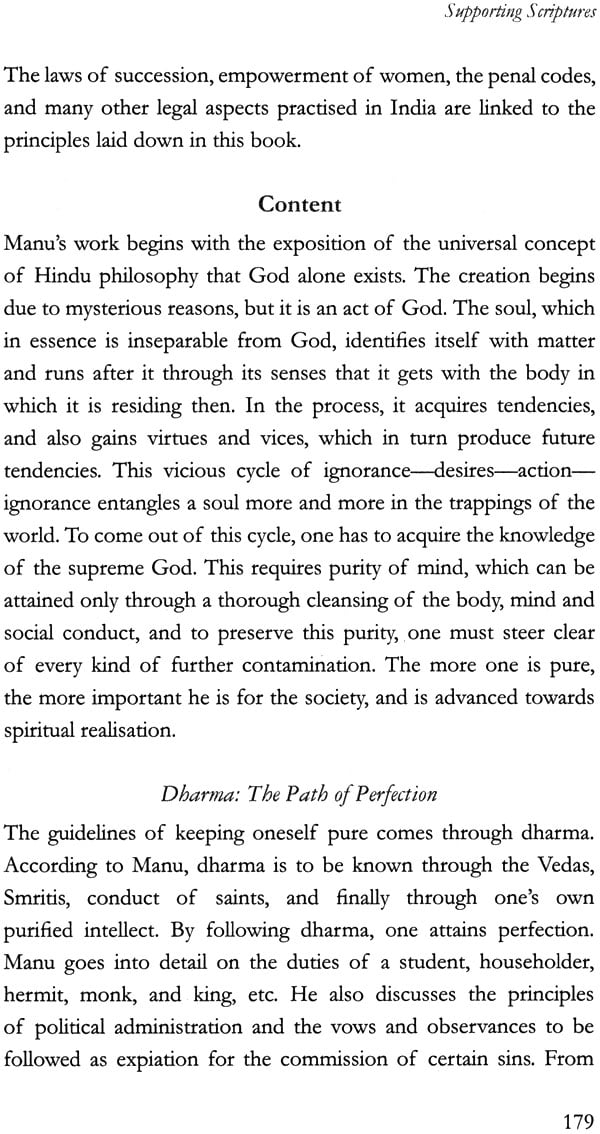
Living Hinduism (Scriptures, Philosophy, Practices)
Book Specification
| Item Code: | NAO849 |
| Author: | Samarpan |
| Publisher: | Niyogi Books |
| Language: | English |
| Edition: | 2017 |
| ISBN: | 9789385285806 |
| Pages: | 240 |
| Cover: | Paperback |
| Other Details | 8.5 inch X 5.5 inch |
| Weight | 280 gm |
Book Description
Hinduism is neither an organised religion nor a proselytizing one. It is often described as a way of life. Which gently nudges its followers –through its scriptures, mythologies rituals and practices –to question deeply live fully and grow wholesomely in compassion and universal acceptance.
Hinduism belives whatever inspires one to stay truly unselfish, be it a vocations, an ideology, or a faith, can lead one towards greater self –realisation and ultimate freedom.
Living Hinduism by Samarpan encapsulates this essence of Hinduism in a languge that can be understood and appreciated by all, especially the younger generation, who need to know and understand what is means to be a Hindu, in an age of strident opinions and changing values.
Samarpan is a monk, writer, teacher with several well known publications to his name, like Tiya: A parrot's Journey Home, Param Junglezen sheru, and Carving a Sky: A perspective on Life. His transcribed talks at the university of his organization on Scriptures in Bengali are available in book from at archeive. Org., and they cover the entire range of Indian spiritual traditions.
Perception matters in religion, as in everything else. A religion's essence as seen by its practioners and preachers, may lie in peace, forgiveness, unity, etc,; but outsider often judge it for its apparent practices, say, conversion, dogmatism, vegetarian, and such.
Hindu Dharma, or simply Hinduism, beats every other religion when it comes to misperception. Its core is missed by outsiders and also by its practioners. Most hindus associates their religion with gods, goddness, rituals, temples, and charlatans, while outsiders think of it as a religion of cows cowardice, and castes. Unlucky foreigners also link it with cheats and charas. And yet, none of these has any importance in Hinduism.
The reason for this wrong perception is that the attackers of Hinduism usually have only a fleeting knowledge of it, acquired mostly through biased writings, and the practising Hindus rarely ever see the source books. It is sad fact about Hinduism that nearly the entire population of hIndus have only simplistic ideas about religion whose sweep once reached from the borders of Iran to Indonesia, and from China to Srilanka.
Sages and saints have been born in the Hindu tradition at regular intervals throughout its history. Even in the 19th and 20th century we had greats like Dayananda Saraswati Sri Ramakrishna, Swami Vivekananda, and Sri Raman Maharshi, who contributed mightly through their spiritual achievement to show what Hindu dharma is truly about. But the Stocky Indian intertia makes people forget the greatness and intensity of their contribution, and they soon retreat to the age old Pin –zones of their vegetative beliefs and rituals.
This work is a modest attempt at presenting Hinduism the way it is, and the way it should be perceived. It discusses the basics of this grand old religion that has played mother to three major religions –Buddhism, Jainism, and Sikhism, and has left deep influences on Zorastrianism and Christianity.
One problem is discussing Hinduism is that it is both a religion and a society: This complicates matters, since the practices of the Hindu society and hindu religion get mixed up. For example, caste was a social system to safe guard the interests of particular group with years it has been wrongly identified as an integral part of Hinduism, the religion. Similarly, putting on the sacred thread was a religious practice, but it later got transformed into a social custom for the upper caste Hindus. In modern times, marriages have moved from being the religious act it used to be, to becoming a social institution where one marries for reasons other than spiritual growth.
The aim of this work is to present Hinduism, the religion and so, it does not discuss the social aspects and issues. The book is divided into four parts: the first one gives a brief outline of Hinduism, the second part gives an overview of its scriptures, the third one discusses the philosophies and the last session looks at athe future Hinduism.
Efforts have been made to keep things simple and easy. Even then, readers may find some of the ideas, a bit difficult in the first reading. Sorry about that.
This work is a product of long years of studying, learning and practising, Care has been taken to present the facts as they are, but even then, chances of mistakes are always there. Sincere apologies for that.
| Contents | Pages No. |
| Preface | 9 |
| Section 1 | |
| Hinduism, | 13 |
| Religion and Spiritually | 14 |
| The Uniqueness of Hinduism | 17 |
| Hinduism in Practice | 20 |
| Section 2 | |
| Scriptures | 55 |
| The Sacred Texts | 56 |
| Popular Scriptures | 96 |
| The Precious Scriptures | 142 |
| Supporting Scriptures | 156 |
| Section 3 | |
| Philosophies | 189 |
| Hindu Darshan | 190 |
| Section 4 | |
| The Future | 221 |
| Livinig Hinduism | 222 |
| Select Biblography | 232 |
| Acknowledgements | 234 |
| Index | 236 |











